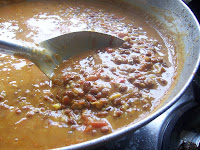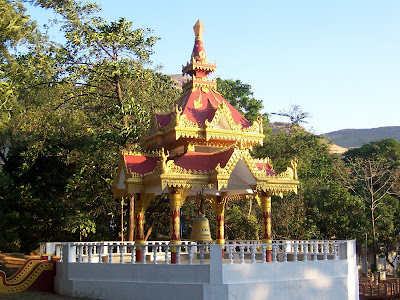After so much travelling :-) .. let’s discuss a bit of Yoga Philosophy? So, what do you think about starting by the definition of Yoga?
Nowadays Yoga has become well-known by the practice of Asanas (Phisical Education), and, in this sense people go on subdividing Yoga, classifying it in ways such: Iyengar Yoga, Vinyasa Yoga, Power Yoga, Bikram Yoga, Hatha Yoga, Kundalini Yoga and so forth. Therefore Yoga became reduced to a system of Physical Training or Exercise and the Yoga subdivisions are nothing but the different styles in which these exercises are practiced and are named over their promulgators and advocates. So.. is it all about Yoga?
Not really!!! Yoga is a Ancient Science and taking it as sole physical exercise is a misuse of knowledge as it is stated in the Hatha Yoga Pradipika and as we will have a chance to discuss in a future post.
The purpose here is to clarify what Yoga really is and by this, offer some basic guide-lines (in posterior articles) to allow Yoga enthusiats to become more aware about how their practices should be done if they really want to practice Yoga.
So let’s see how Yoga is defined by it’s foremost and authentic exponent, the Sage Patañjali. In the Yoga Sutras, a classical work, Patañjali has compiled and systematized the knowledge regarding to the Philosophy of Yoga. This means that he has not created anything new. He has only organized and presented the knowledge in a systematic form, so that less evolved souls could follow the disciplines and attain the benefits of their application.
The Yoga Sutras comprehend 195 aphorisms (tersely sentences, but vigorously expressive observations containing a general truth) through which the Yoga Philosophy are exponded. In the first sutra Patañjali declares that from that moment Yoga is going to be explained for the benefit of all.
And in the very 2nd sutra Patañjali gives us the definition of Yoga as follows:

Obviously the knowledge of Sanskrit is necessary for grasping the meaning of the aphorisms. For that, we the help of different commentators and scholars, we can understand the above as follows:
yoga – union or joining (implying “means or use” and also “result”)
citta – the ordinary consciousness (personality-complex, including the different aspects of the mind, intellect, ego, emotions)
vrtti – the different states, fluctuations, modifications, behaviour
nirodhah – restraint, control, cessation
Yoga is, thus, Union achieved by restraining, leading to the cessation of the fluctuations of the ordinary consciouness.
But which Union is that talked about in here. I have heard Yoga students and practitioners repeating: Union of Body, Mind and Spirit. This is not wrong, but the sentence has already become a cliché. Deeper insight into the subject is lacking. The 3rd sutra explains clearly which Union Patañjali is talking about.

The translation of this sutra is:
tada – then, at that time (of Union)
drastuh – the seer, the self, the soul
svarupe – in its own, in its state
avasthanam – abide, dwell, get stablished, settle
Then, at that time (of Realization), the seer gets stablished in its own state.
Yoga is, therefore, a result: the state of union of the soul with it’s true essence; an outcome of the continuous practice of a system of disciplines. But Yoga is also the means through which this Union is achieved. In other words, Yoga is also the application or the course of discipline itself.
The next sutra explains what happen when the seer or the soul is not established in his own.
 vrtti
vrtti – the different states of the ordinary consciousness or the complex-personality (its fluctuations and modifications, moods and behaviour)
sarupyam – identification of, appearance of
itaratra – not at the state of realization, at other time, elsewhere
At all other times, the seer is identified with the different states of ordinary consciousness
In this state, it can not realise its own fundamental nature which is, by the way, divine in essence. That is the estate in which we normally live. We get identified with our body and mind and do not realise that we are a divine soul.
This makes me remind my childhood when I heard someone telling me that I had a soul and I was wondering what would be that thing. Later on I heard that the animals had no souls and I also learnt that when the Jesuits arrived in Brazil they believed that the indigenous peoples who lived there did not have a soul and that they could only attain one through the ritual of baptism. Today I think of what is more absurd: to think that the animals or the Brazilian Indians would not have souls or to think that we have one? The whole concept is wrong. It is not this “I” who has a soul. Not this body or mind that has a soul. But I am the Soul who uses the body and mind to operate in this material word and who gets completely identified to them (body and mind) in the states of ordinary consciousness.
Now the question is: are your Yoga practices helping you to realise your own divine nature, to achieve union, or are they making you more identified and attached to your body? If the latter is so, what you are doing is not Yoga.
Let's us practice real Yoga and get stablished in our own divine nature!!
Namaskar !!!

















 So we ventured out to catch the charm of this town. We visited the huge
So we ventured out to catch the charm of this town. We visited the huge 

























 The pillars are so geniously arranged in such a manner that none of them obstruct the view of the idol. The vast expanse of the structure includes four artistic entrances (from which only one is open to the public). It is a three story building which enshrines four huge white marble images of Bhagavan Adinath facing all the four directions on each level, therefore, it is popularly known as Chaturmukh Jain Temple.
The pillars are so geniously arranged in such a manner that none of them obstruct the view of the idol. The vast expanse of the structure includes four artistic entrances (from which only one is open to the public). It is a three story building which enshrines four huge white marble images of Bhagavan Adinath facing all the four directions on each level, therefore, it is popularly known as Chaturmukh Jain Temple.

 Fortunately we met a Jain priest who further explained us that the temple consists of 76 smaller domed-shrines, four assembly halls situated in all four directions, and, 84 subsidiary shrines giving the message to a human to liberate from the 84 lakhs cycles of birth and death and attain salvation. The domes and ceilings of the temple show innumerable carvings depicting incidents from the past. The artists have given these carvings life and movement with their marvellous workmanship. And, after all this may all say, again as I said earlier, that this artistically chiseled masterpiece could certainly take its place as one of the Wonders of the World.
Fortunately we met a Jain priest who further explained us that the temple consists of 76 smaller domed-shrines, four assembly halls situated in all four directions, and, 84 subsidiary shrines giving the message to a human to liberate from the 84 lakhs cycles of birth and death and attain salvation. The domes and ceilings of the temple show innumerable carvings depicting incidents from the past. The artists have given these carvings life and movement with their marvellous workmanship. And, after all this may all say, again as I said earlier, that this artistically chiseled masterpiece could certainly take its place as one of the Wonders of the World. 


 The technique involves the following observances and practices: Sila (morality), Samadhi (concentration) and Panna (wisdom).
The technique involves the following observances and practices: Sila (morality), Samadhi (concentration) and Panna (wisdom). 












